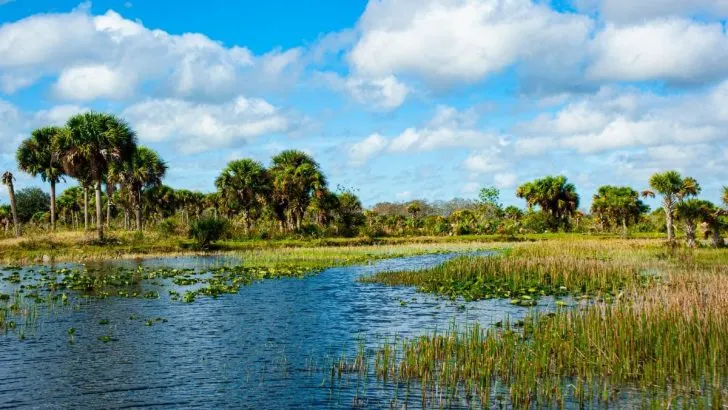Low maintenance Florida plants are certainly the plants you want for your apartment or yard in this region. In a warm climate like Florida, sometimes all your hard work can go to waste quickly and it all seems for naught.
But what if you put minimal effort into your plants and the plants succeed? What if your gardening doesn’t take long this time, but you’re still happy with the result? This time your plants will not wither, nor will your time in the garden be wasted.
Today we are talking about a low-maintenance plant care guide for these plants. When you learn the growing habits of these plants, you will understand why they are so suitable for warm and sunny gardens and apartments in Florida.
Let’s learn all about these low-maintenance plants.
9 Low Maintenance Florida Native Plants
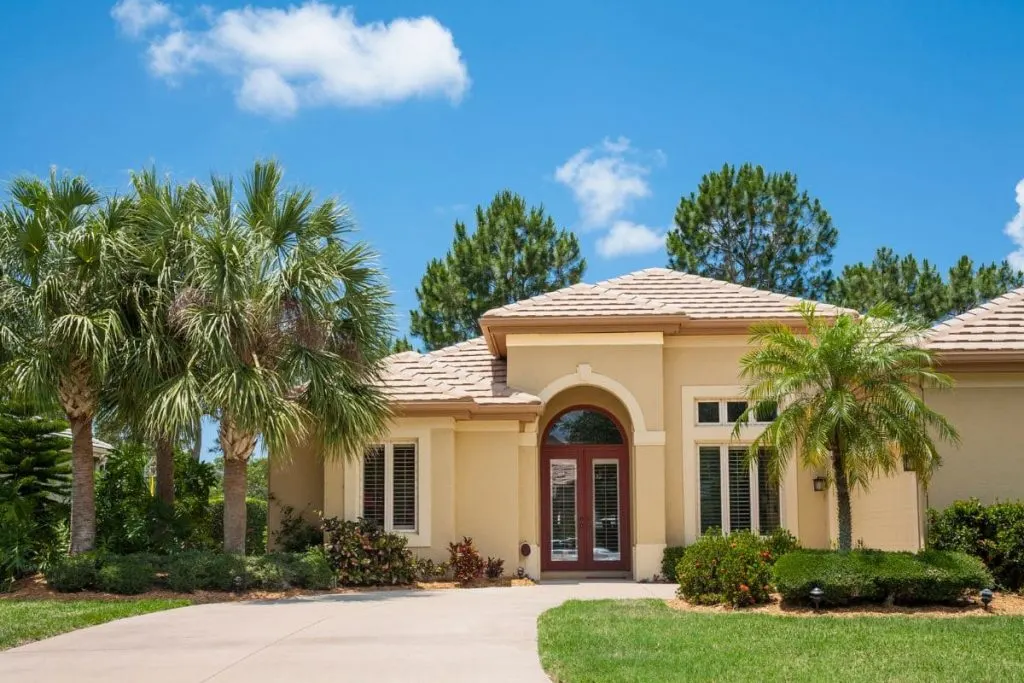
We mentioned some of the popular low-maintenance plants in Florida above, but what about other plants you want to learn about? If you’re more a fan of landscaping plants or flowering trees may be, below you’ll find some for sure.
Flowering trees yellow, flowering trees in Texas and some types of palm trees in Florida are also your options. If you’re wondering how that’s because their care guide is very similar.
Palm-like plants, usually Florida native plants too will only need regular watering every 10 days, and even partial shade suits some.
But today let’s focus on the 9 low maintenance plants in Florida and their care guides.
1. Blanket Flower
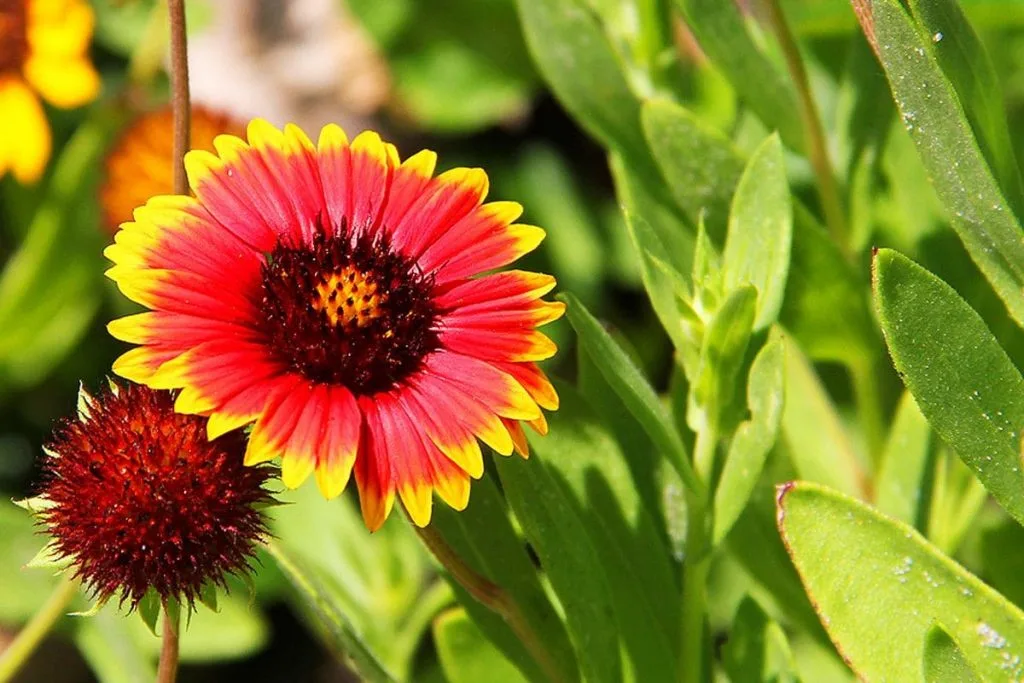
Gaillardia is the beautiful coral red-yellow flower that will brighten up your garden in the blink of an eye.
They resemble daisy flowers and are mostly grown as ground covers. The flowers are very simple, and despite their enchanting appearance, they do not require much attention.
If your garden lacks color and you don’t have much time, plant these flowers without thinking.
The flowers were named after Gaillard de Charentonneau, a botanist from the 18th century. That is why it is sometimes called Gallard flowers.
Light needs
Blanket flower thrives the best in partial shade combined with full sun conditions. This beauty needs at least 4-5 hours of direct sun.
If you don’t have partial shade, bright indirect light also works well for them. However, these perennials hate full shade. When they start blooming in the late spring, they need a bit more sun then.
Watering
This breathtaking plant is moderately drought-tolerant, believe it or not. It sure looks like a plant that needs a regular watering schedule, but it can go 10-12 days without water.
However, when watering, we advise you use distilled water since the tap water contains soil. This plant isn’t very salt tolerant. Rainwater can be an alternative too.
Soil type and fertilizer
These plants thrive the best in slightly acidic soils. It’s best if you combine sandy soils with perlite or peat moss.
Fully peat soils won’t be good for this plant since they will be too acidic for this plant. The best choice for them is simply fast-draining soils. When it comes to the fertilizers for this plant, it’s best to use organic compost for this flower.
Pruning and Propagation
This beautiful plant does not require pruning. Some people prune this plant just below the flowers after flowering, but there is no need to do this.
The dry worlds will fall off by themselves and then they will bloom again in the same place the following season. Propagation of this plant is not the easiest with seeds from flowers that are collected in late summer or early fall.
2. Sabal Palm
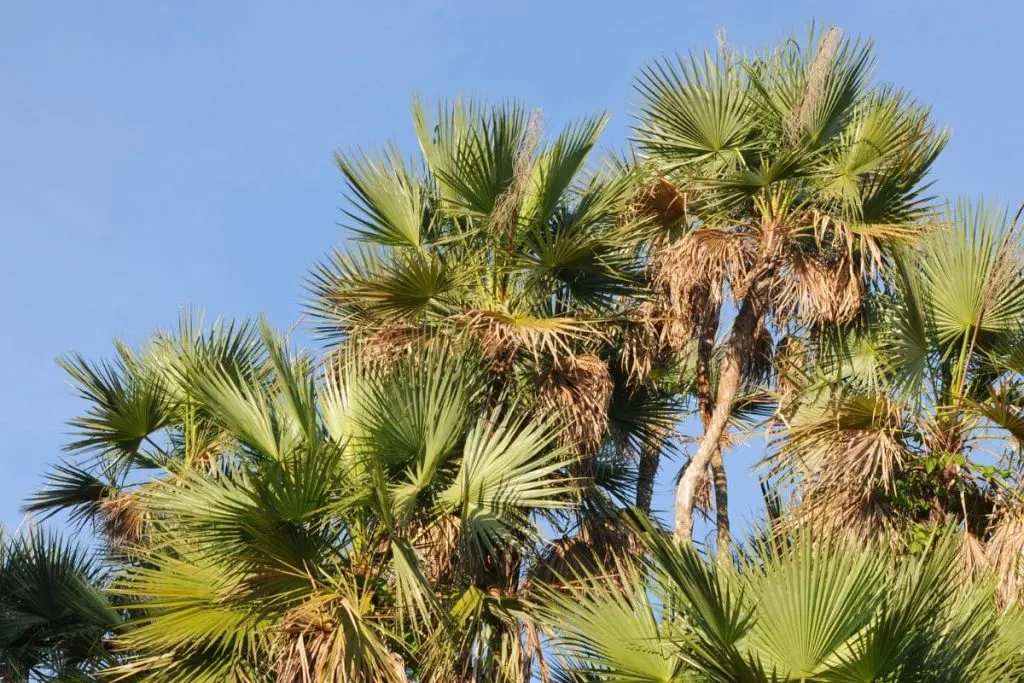
Sabal palmettos is an amazing palm tree that can grow up to 50 feet tall. It is very similar to the pineapple palm tree. That’s definitely another great palm tree you might want to consider. This plant is native to southeastern Florida and west India.
It is also known as the cabbage palm, cabbage palmetto, blue palmetto, and Mexican palmetto since they grow in Mexico as well. This plant is evergreen and perfect for planting in this warm region. It won’t need any trimming and it’s not one of the messy plants either. is
Light needs
This beautiful plant is one of the few palms that can grow in partial shade. Unlike most palm trees, it does not need a lot of sun to grow well. If you don’t have enough sun in your yard, don’t worry. A little partial shade won’t hurt your palm tree.
Watering
The watering schedule usually changes. A young palm requires less water, and an adult palm requires more water, but less frequent watering. You can use any type of water for watering.
Soil type and fertilizer
When it comes to the soil that suits her best, it’s short and simple – sand. Do not stray too far from the sand. It grows best in it and shows the best results. Fertilize them with organic palm fertilizer or 2-3-1 fertilizer. It also shows very good results on this palm and palms in general.
Pruning and Propagation
Prune the plant when you notice damage such as yellow tips and the like. In other circumstances, there is no need to prune the plant. It is propagated by seeds that are collected in late summer. You can also use root suckers, but they are very, very rare with this type of plant.
3. Liriope

Liriope muscari is a beautiful flower that will be an excellent ground cover in your garden. The known names of this plant are lilyturf, lilyturf, border grass, and monkey grass. If you lack both color and greenery in your garden, with this plant you will fulfill both conditions.
The plant is perennial and grows in purple and white. The purple edition is very reminiscent of lavender. They are very easy to maintain and their flowering period lasts a very long time. It usually starts from early spring until late fall.
Light needs
These beautiful flowers enjoy the most in a few hours of sun and bright indirect light afterward.
It does not like excessive shade, but it will do well to give it a few hours of shade in the afternoon. If you grow it inside, an east-facing window is the best option.
Watering
Water it every 7 days in summer, and every 10 days in spring. Tap water is perfectly fine for this plant, so you don’t have to think about the amount of salt, magnesium, etc. In winter, you can actually water it every 12-14 days.
Soil type and fertilizer
Perlite soil is best suited for this plant. Add a fifth of the sand to the containers or pots in which you are planting.
In this way, you will only slightly dilute the acidity of the soil, but it will remain acidic enough for the plant. Fertilize with an organic fertilizer when planting in the spring or a 10-10-10 fertilizer.
Pruning and Propagation
It is not necessary to prune this plant unless there is damage to the plant. You can propagate it in several ways, but we recommend seed propagation. It is not the easiest and gives the best results.
4. Dracaenas Lilies
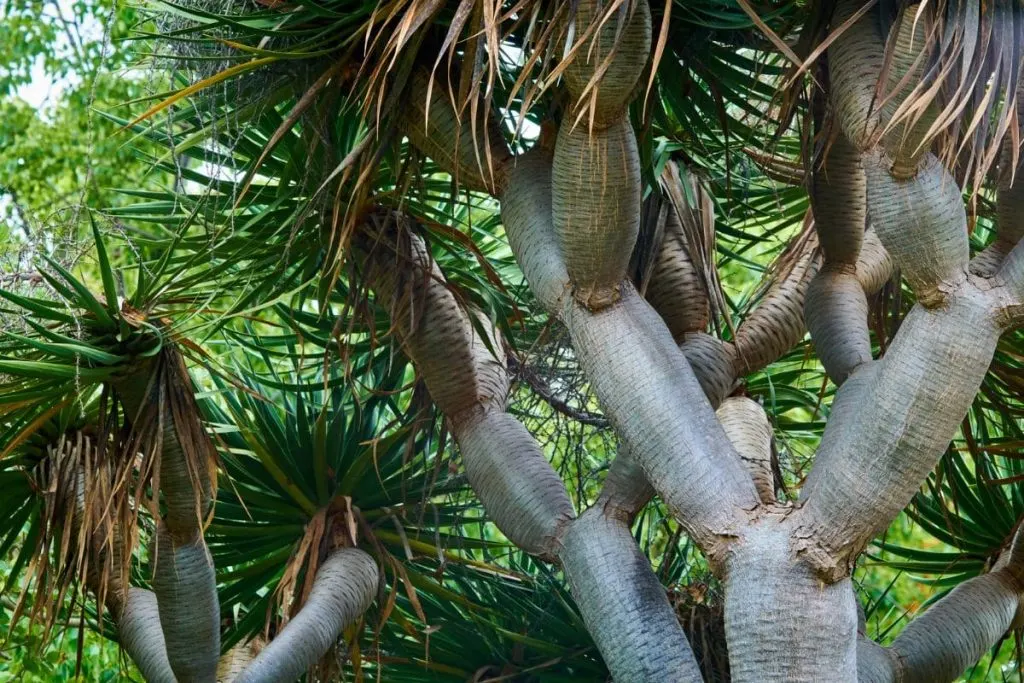
Dracaena marginata is one of the most beautiful versions of the lily. If you thought you had the most beautiful version with the white lily, you are wrong. This plant will convince you otherwise and you’ll want to get a few more.
What is best of all is that they are really very undemanding, as you will see below. If you are familiar with the symbolism of lilies, then you will love having them in your home even more. They are also one of the better-potted plants that you can have in your home.
Light needs
This plant prefers moderate light and a little sun. Therefore, you can plant it under a tree where it will have both sun and shade and mild light due to the shade of another plant. They don’t thrive well in the full shade.
Watering
Most plants that thrive well in this area are drought-tolerant. However, this plant isn’t. If you want to see it thrive perfectly well, water it every 6-7 days. On hot summer days, you’ll see how bad its need for water is.
Soil type and fertilizer
They do well in perlite soil combined with sand. You can add a bit of compost when planting at first or you can fertilize them in the springtime with 10-15-10 fertilizers. This plant doesn’t like liquid fertilizers.
Pruning and Propagation
You don’t have to prune the plant unless you spot some damage on its leaves. Propagation is done in the early springtime with the seeds. That is the quickest, most efficient, and most successful way to do it.
5. Date Palm
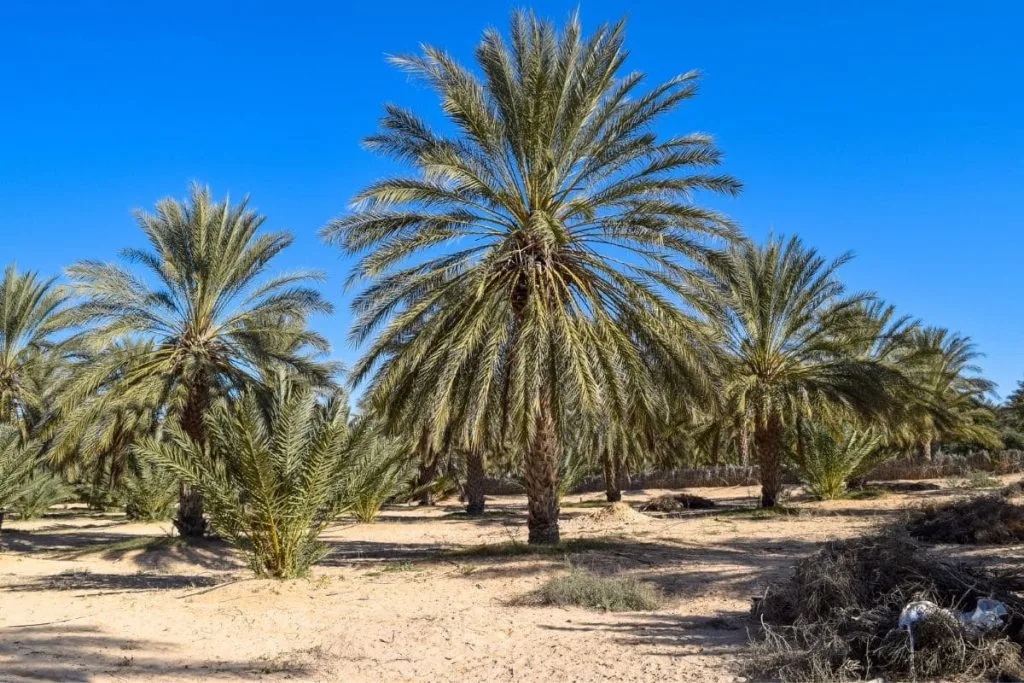
Phoenix dactylifera is a very ancient plant of the palm tree that belongs to the edible plant. It usually grows up to 10 feet in ideal growing conditions. But it is definitely not one of those species that will rise high in the sky due to enough sun and water.
It originates from North Africa and grows best in such conditions. Precisely because of its origin, this plant will do well in this region.
It can also be found in East Asia. Some say that the plant actually originates from the area where Iraq is today.
Light needs
When it comes to the need for sun, plant it somewhere that gets at least 3-4 hours of sun. It is not a big fan of the sun like some plants, but those three hours a day will be very beneficial for it. The rest of the day can be spent in partial shade.
Watering
The water needs of this plant are very simple. Water it once every 8 days and the plant will be more than happy. At the time of flowering, you can increase the watering to every 5 now, but with a smaller amount of water.
Soil type and fertilizer
Like most palms, this palm grows best in sandy soil. You don’t have to try hard or invent something special for them. Sand is the best option. Fertilize them in the spring with organic palm fertilizer.
Pruning and Propagation
Prune your palm when you see potential damage. These are mostly silent leaf tips created from little water or a lot of sun. Propagate by seed in spring.
6. Wild Petunia
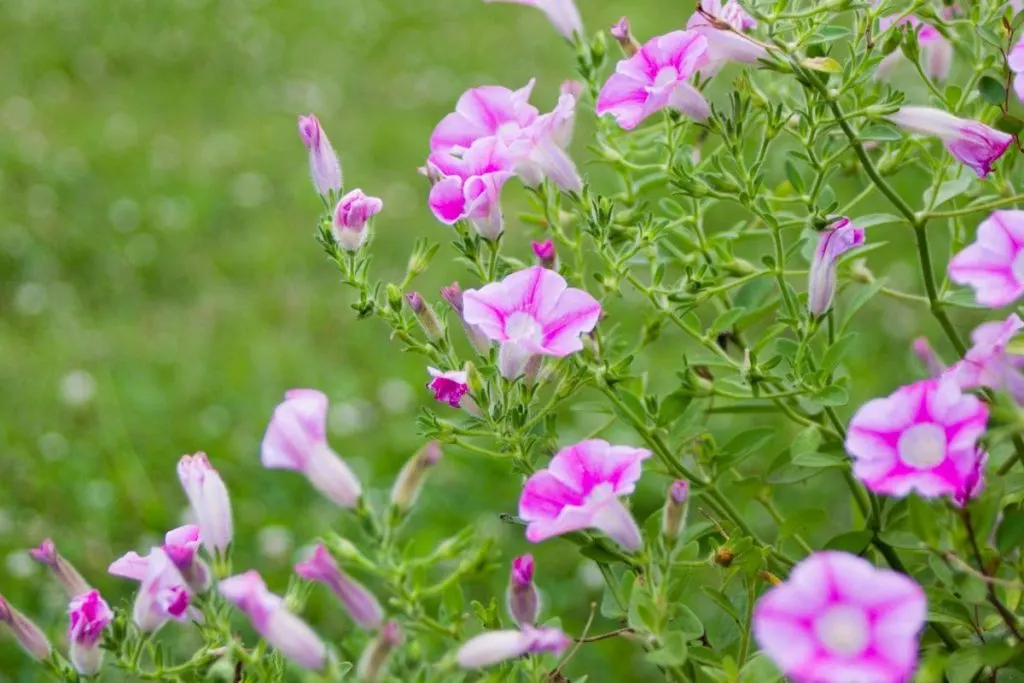
Quararibea pterocalyx is the favorite flower of hummingbirds and butterflies. Very bright purple flowers will beautify your top with their elegance and simplicity. They don’t grow very tall, usually between 1 and 2 feet when you give them plenty of water.
Other conditions are more or less adaptable to the region where they grow. Although there is speculation that the plant is poisonous, it is safe for both humans and animals.
Although it can grow and thrive very well in Florida, it is interesting that these flowers are suitable for hardy zone 4.
Light needs
Petunias need a lot of sun, especially in the morning when the sun isn’t so bright. Their vibrant colors will depend a lot on how much sun you give them per day. They can be in partial shade in the afternoon.
Watering
Water them with tap water or distilled water early in the morning before the sun rises. If you’re growing them in the house, you can water them in the afternoon then.
Soil type and fertilizer
Organic well-drained soil, perlite soil works best for this beauty. You can use regular houseplants fertilizer for your petunia plants.
Pruning and Propagation
Prune only when you spot potential damage on the plant. Propagate the plant with the seeds in the spring time or with the root suckers.
7. Dwarf Clusia
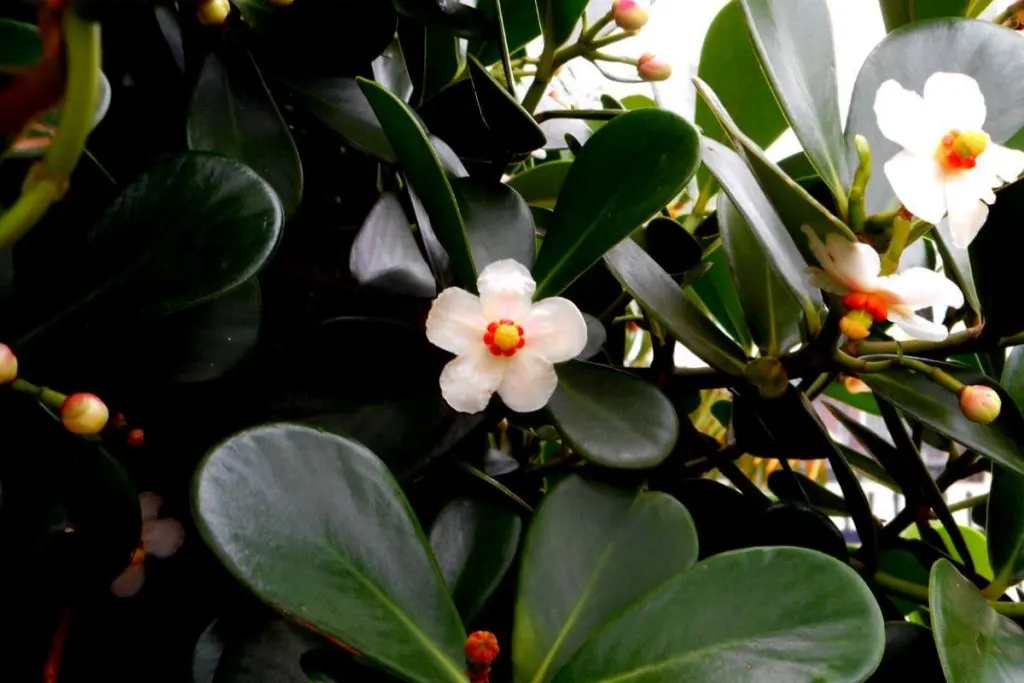
Clusia fluminensis ‘Pedra Azul’ is an amazing dwarf tree variety from the Clusia species that will brighten up your garden.
If you enjoy the appearance of this tree, you’ll love the dwarf jacaranda tree and little giant arborvitae too. These two trees are also low-maintenance and they thrive perfectly in this climate.
The flowers are often called Nana Rosea or just Nana. The plant is an excellent potted plant as well.
Most people actually grow this plant as a houseplant. It is rarely planted outside in the garden. Among other large garden plants, it would not stand out as it does inside.
Light needs
This plant grows best when it has 3-4 hours of sun, and the rest of the day is full of light. These plants do not tolerate shade well, or even partial shade.
Watering
Water it every 7 days, with any type of water. Give a young plant less water, and a more mature one a little more.
Soil type and fertilizer
This plant grows in various types of soil and is best in black soil combined with perlite soil. You don’t need to fertilize it.
Pruning and Propagation
It is propagated by cuttings in early spring. You should prune it only when you notice any damage to this plant.
8. Bromeliad
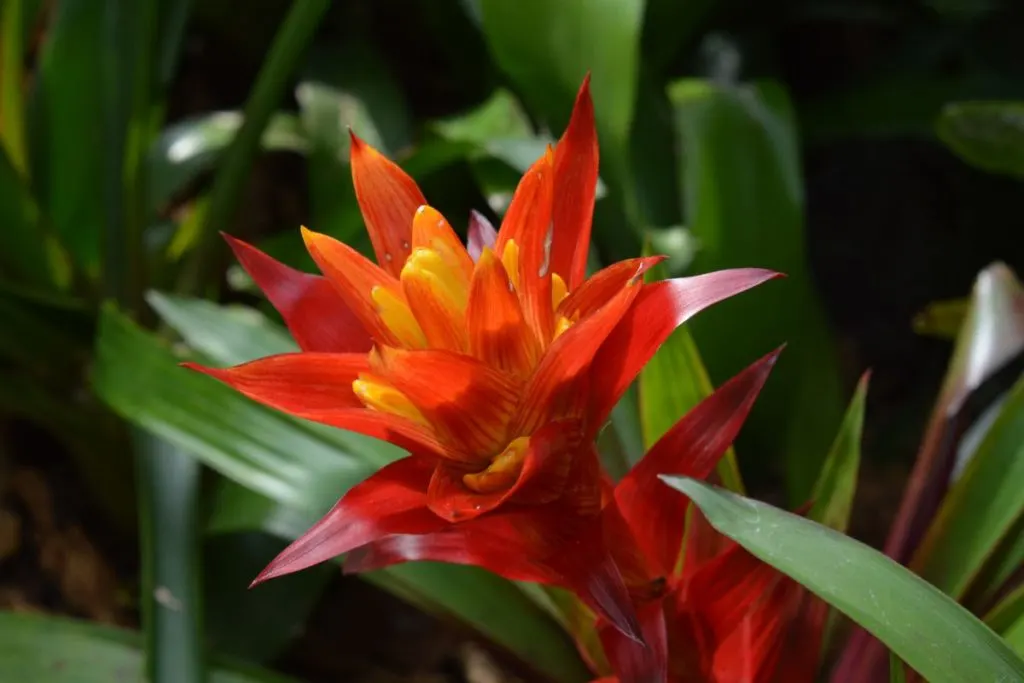
Bromeliaceae is a plant that resembles a starfish and a houseplant at the same time. This excellent plant will complement your home and garden with a wonderful green color with red edges.
It produces beautiful yellow and red flowers in spring and early summer. It comes from South America. And Bromeliad in Florida is very popular.
Common names of these plants are earth stars and urn plants. If your garden lacks color, make this plant your first choice.
Light needs
Plant in where it has a lot of sun during the day. That should be around 5-6 hours per day. This plant isn’t a big fan of shade. They can tolerate partial shade.
Watering
Water them every 9-10 days and in their blooming time every 7 days. You can choose tap water since the plant is salt tolerant. If planted outside, water them in the morning.
Soil type and fertilizer
They thrive well in almost any soil type, but the best choice is peat moss combined with sand. They don’t like acidic soils.
Pruning and Propagation
The plant doesn’t have to be pruned. Propagate them in the springtime with seeds.
9. Longleaf Pine
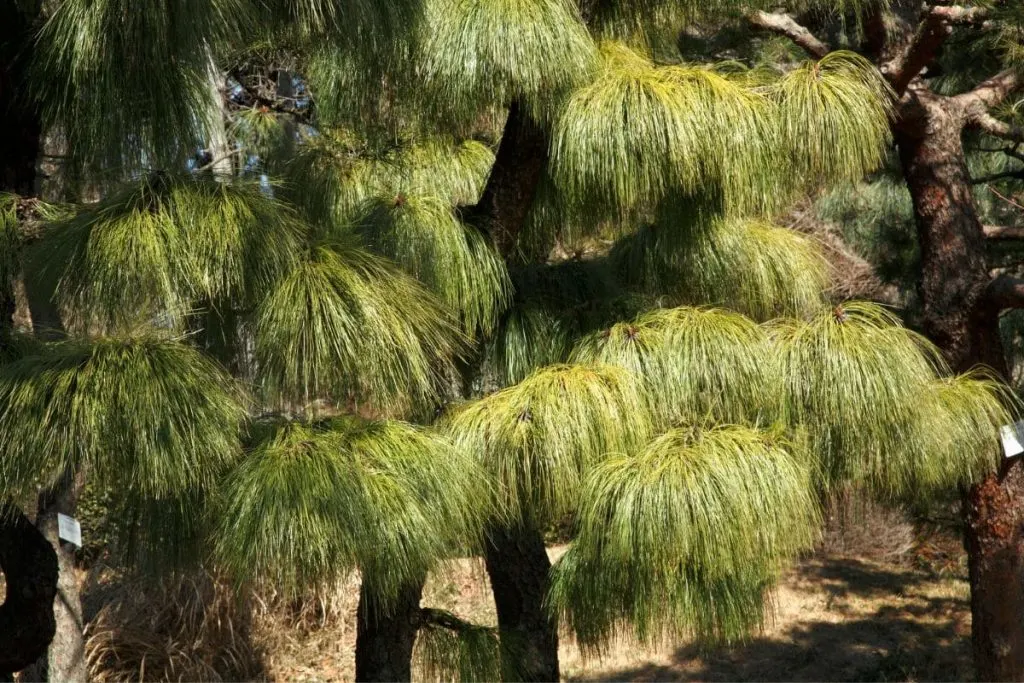
Pinus palustris is definitely the most wonderful pine tree you can get in your yard in this region.
Along with this pine tree, we suggest you consider some of the pine trees in Wisconsin since some of them have a similar care guide (very simple).
This pine tree truly is different than the other pine trees we’re used to. It has longer and bigger leaves and its fragrance is stronger too.
It is native to both south and north America. These needle-shaped leaf trees are very popular today. There are around 90 million of them all around the world.
Light needs
They prefer lots of sunlight in the morning hours and shade to partial shade in the afternoon. If your position doesn’t have more than hours of sun, that won’t be bad for this pine tree since they thrive well in shade too.
Watering
Water your lovely pine tree every 10-12 days, in the winter even every 2 weeks. Pines don’t need a lot of water to thrive well.
Soil type and fertilizer
Almost any soil type will suit pine trees well. They are one of the easiest trees to take care of. The plant doesn’t have to be fertilized as well.
Pruning and Propagation
You will have to prune it if you spot some damage or pest infestation on your pine. Propagate it with stem cuttings in the springtime.
Wrapping Up
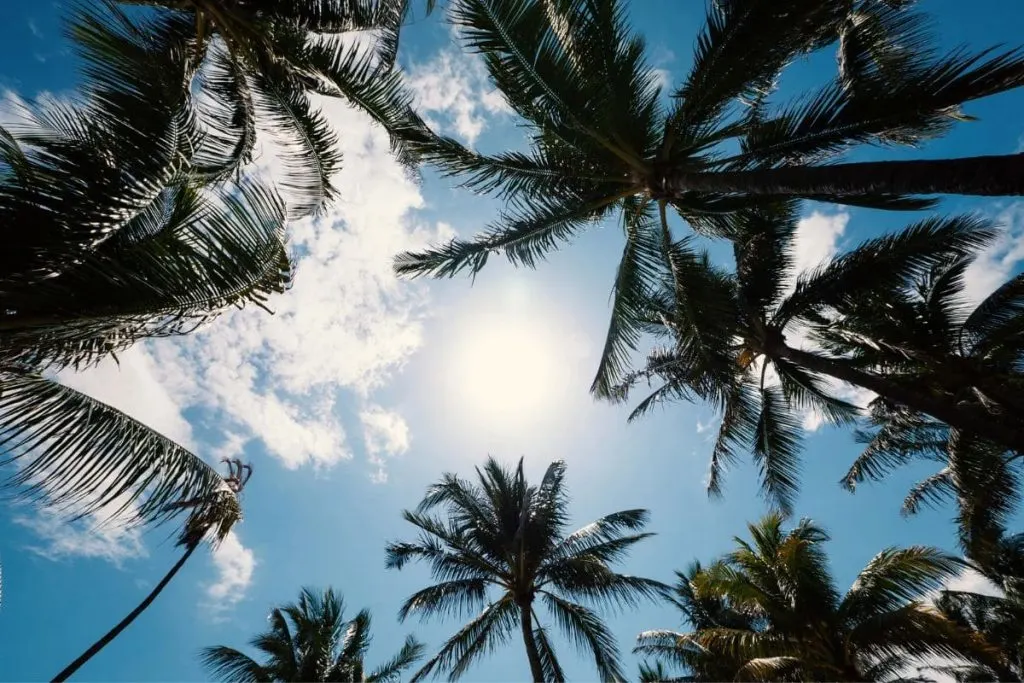
Did you enjoy today’s article about low-maintenance Florida plants? Some of these plants are native, and some are non-native, but they’ll all thrive perfectly in this area.
When you plant some of these plants, it will seem later on like they decided to grow naturally in your garden. When choosing the right plants for your garden, you don’t have to be worried anymore.
These low-maintenance plants will do great in coastal areas and home landscapes as well. In the next summer months, you’ll have a garden full of amazing flowers.
That would be all for today, see you soon with similar topics.

